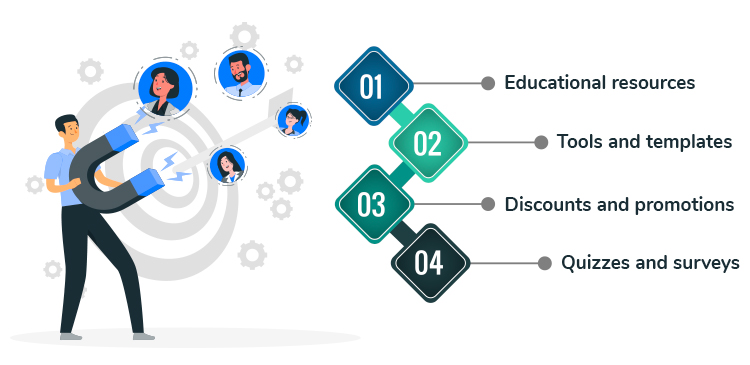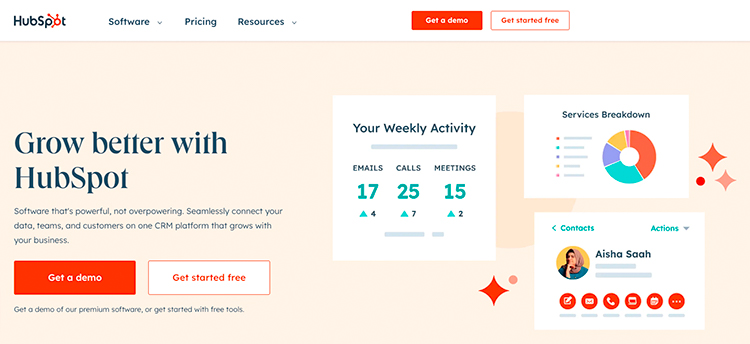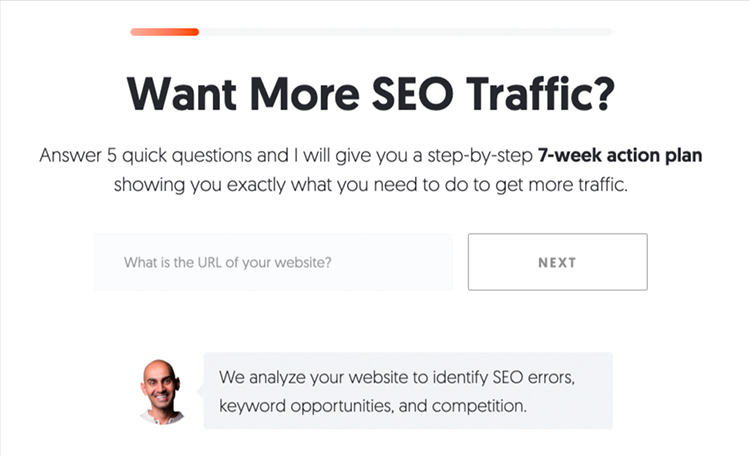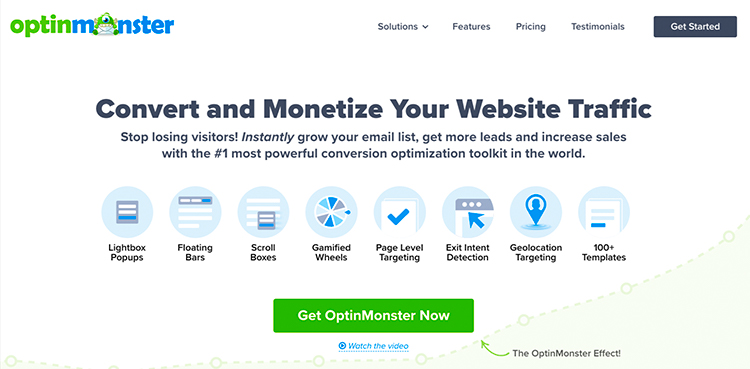The Role of Lead Magnets in Email Marketing Funnels on WordPress: Best Practices and Examples

Lead magnets are free resources or incentives offered by businesses in exchange for contact information from potential customers.
Email marketing funnels, on the other hand, are a series of automated email messages that are sent to subscribers in order to build relationships, engage with them, and ultimately, drive conversions.
Lead magnets play a crucial role in email marketing funnels because they help to attract and convert potential customers into subscribers.
By offering something valuable and relevant, businesses can incentivize visitors to provide their contact information, allowing them to nurture and build relationships with them over time.
In this blog post, we will explore the role of lead magnets in email marketing funnels on WordPress. We will discuss what lead magnets are, how they can be used to increase email open rates and conversions, and best practices for creating effective lead magnets.
We will also provide examples of successful lead magnets and strategies for integrating them into email marketing funnels on WordPress.
“What’s a Lead Magnet?” one might ask!

Lead magnets are resources or incentives offered by businesses in exchange for contact information from potential customers. Examples of lead magnets include ebooks, whitepapers, webinars, case studies, checklists, and templates.
There are several types of lead magnets that businesses can use to attract subscribers, including:
- Educational resources: ebooks, whitepapers, and webinars that provide valuable information and insights.
- Case studies and testimonials: showcasing successful customer stories and outcomes.
- Tools and templates: offering practical tools and templates to help solve specific problems.
- Discounts and promotions: exclusive offers or discounts for products or services.
- Quizzes and surveys: interactive quizzes or surveys that engage visitors and provide insights into their needs.
This Is How You Can Create Effective Lead Magnets!
To create effective lead magnets, businesses should focus on providing value to their target audience, addressing specific pain points, and making them easy to access. Additionally, effective lead magnets should be visually appealing and well-designed, and include clear calls-to-action to encourage visitors to take the next step.
Email marketing funnels on WordPress
Email marketing funnels are a series of automated email messages that are sent to subscribers in order to build relationships, engage with them, and ultimately, drive conversions.
Components of email marketing funnels includes:
- opt-in forms,
- welcome emails,
- educational content,
- promotional offers,
- follow-up sequences.
To set up an email marketing funnel on WordPress, businesses can use a variety of tools and plugins, including email marketing platforms like Mailchimp, ConvertKit, or Drip, and WordPress plugins like OptinMonster or Thrive Leads.
Some best practices for email marketing funnels on WordPress include creating engaging and relevant content, personalising messages, segmenting subscribers, and regularly testing and optimising campaigns.
The role of lead magnets in email marketing funnels
Attracting subscribers:
Lead magnets play a crucial role in attracting subscribers to email marketing funnels because they offer something valuable in exchange for contact information. This incentivizes potential customers to share their information and opt-in to receive future communications.
Increase email open rates and conversions:
Lead magnets can increase email open rates and conversions by providing a relevant and valuable incentive to subscribers. Additionally, by segmenting subscribers based on their interests and behaviours, businesses can tailor their messaging and offers to increase the likelihood of conversion.
Joining Forces: Lead Magnets with Email Marketing Funnels on WordPress
To integrate lead magnets into email marketing funnels on WordPress, businesses can use various tactics, including:
- Creating dedicated landing pages for each lead magnet that highlight the benefits and encourage sign-ups.
- Adding lead magnet offers to relevant blog posts and website pages.
- Including lead magnet offers in social media posts and advertisements.
- Using exit-intent pop-ups to offer lead magnets to visitors who are about to leave the website.
The Art of Persuasion: Crafting Irresistible Lead Magnets for Your WordPress Email Marketing Funnel

Creating effective lead magnets is crucial to the success of an email marketing funnel on WordPress. Here are some best practices for creating lead magnets that attract subscribers and drive conversions:
Creating compelling and valuable content

The content of a lead magnet should provide value to the target audience by addressing specific pain points or interests. To create compelling and valuable content, businesses can follow these steps:
- Research customer pain points and interests to identify topics that are relevant and valuable.
- Use a clear and concise writing style that is easy to understand and engages the reader.
- Provide actionable tips or information that can be implemented by the reader.
- Ensure that the content aligns with the overall messaging and branding of the business.
Designing visually appealing lead magnets

- The design of a lead magnet is just as important as the content. Here are some tips for designing visually appealing lead magnets:
- Use a clean and simple design that is easy to read and understand.
- Incorporate the branding elements of the business, such as colours and fonts, to create a consistent look and feel.
- Use high-quality images and graphics that are relevant to the content.
- Consider using a professional designer to ensure that the lead magnet looks polished and professional.
Testing and optimising lead magnets for maximum effectiveness

After creating lead magnets for your email marketing funnel on WordPress, it is important to test and optimise them to ensure that they are as effective as possible. Here are some tips for testing and optimising lead magnets:
- A/B test different versions of the same lead magnet to determine which version performs better.
- Test different headlines, designs, and calls-to-action to see which elements drive the most conversions.
- Monitor metrics such as click-through rates, conversion rates, and open rates to track the performance of lead magnets.
- Use customer feedback and surveys to gather insights on how to improve lead magnets.
By following these best practices, businesses can create lead magnets that provide value to their target audience and help to drive conversions in their email marketing funnel on WordPress.
Lead Magnet All-Stars: Winning Examples of Email Marketing Funnels on WordPress
Real-life examples can help to illustrate how businesses have successfully used lead magnets in their email marketing funnels on WordPress. Here are some case studies of businesses that have used effective lead magnets:
HubSpot: HubSpot’s lead magnet is a free email course that teaches users how to create effective email marketing campaigns. This lead magnet provides value to HubSpot’s target audience of marketers and has helped to drive conversions in their email marketing funnel.

Neil Patel: Neil Patel, a well-known digital marketing expert, offers a free SEO analysis tool as a lead magnet. This tool provides value to Neil’s target audience of website owners and has helped to drive conversions in his email marketing funnel.

OptinMonster: OptinMonster’s lead magnet is a free guide on website conversion optimization, which provides valuable information and actionable tips to website owners on how to increase their conversion rates. This lead magnet has helped to attract subscribers and drive conversions in their email marketing funnel, and it is a great example of a lead magnet that provides specific value to the target audience and helps to address a specific problem or pain point.

Why They Worked: Deconstructing the Success of Lead Magnets on WordPress
Successful lead magnets share certain characteristics that make them effective in attracting subscribers and driving conversions. Here are some strategies used by successful lead magnets:
Provide value: Successful lead magnets provide value to the target audience by addressing specific pain points or interests.
Solve a problem: Lead magnets that solve a specific problem for the target audience can be highly effective in attracting subscribers.
Use a strong call-to-action: Lead magnets should have a clear and compelling call-to-action that encourages the target audience to sign up.
Be visually appealing: Lead magnets that are visually appealing and well-designed can help to attract subscribers and make a strong impression.
By analysing successful lead magnet strategies, businesses can learn from the best practices of others and apply them to their own email marketing funnel on WordPress.
Takeaways from successful lead magnets
By examining successful lead magnets, businesses can learn valuable lessons and insights that can help them create effective lead magnets for their own email marketing funnel on WordPress. Here are some key lessons learned from successful lead magnets:
Provide specific value: Successful lead magnets provide specific value to the target audience by addressing a specific pain point or interest. This helps to attract subscribers and build trust with the audience.
Be creative and unique: Lead magnets that are creative and unique can help to stand out from the competition and make a strong impression on the target audience.
Focus on quality over quantity: It’s important to focus on creating a high-quality lead magnet that provides real value to the target audience, rather than simply trying to attract as many subscribers as possible.
Continuously test and optimise: Successful lead magnets are often the result of continuous testing and optimization. It’s important to track performance metrics such as conversion rates and adjust the lead magnet strategy as needed to improve results.
Integrate with the email marketing funnel: A lead magnet should be integrated into the email marketing funnel to help move subscribers through the funnel and ultimately drive conversions.
By keeping these lessons in mind and applying them to their own lead magnet strategy, businesses can create effective and successful lead magnets that attract subscribers and drive conversions in their email marketing funnel on WordPress.
Conclusion
Lead magnets are a key element of any successful email marketing funnel on WordPress. They serve as a powerful tool to attract subscribers and drive conversions.
In order to create effective lead magnets, businesses should follow best practices such as designing visually appealing content, optimising for mobile devices, and testing and analysing regularly. By doing so, they can ensure that their lead magnets are resonating with their target audience and driving the desired results.
Moreover, analysing successful lead magnet strategies can provide valuable insights into what works and what doesn’t, allowing businesses to adjust their approach accordingly. Through trial and error, businesses can develop lead magnets that are uniquely suited to their audience and that drive the highest possible conversion rates.
Lead magnets are a powerful and effective way to attract and engage subscribers in email marketing funnels on WordPress. By creating compelling content, following best practices, and analysing successful strategies, businesses can build a loyal subscriber base and drive conversions, ultimately leading to increased revenue and growth.
Don’t miss out on the opportunity to take your email marketing to the next level with lead magnets – start creating them today and see the results for yourself!












